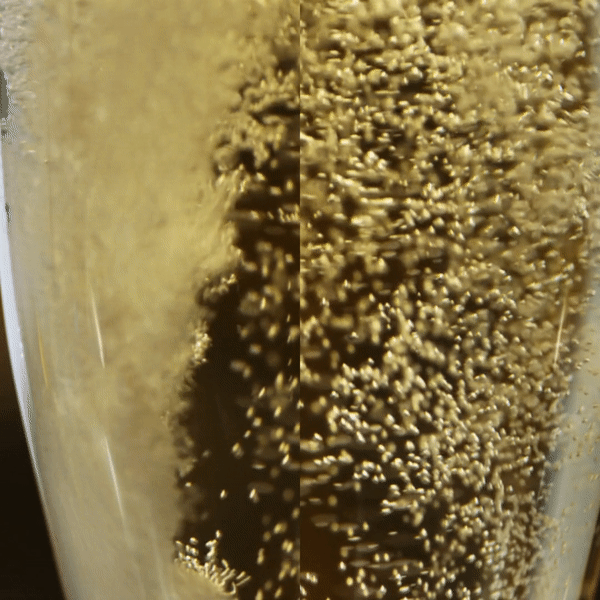When it comes to champagne, the bubbles tell a story, whispering secrets of its creation and aging process. Let’s explore three crucial aspects to consider when analyzing the perlage of a sparkling glass.
Imperfections in the Glass: Nucleation points for Co2 bubbles.
Ever experienced the puzzling scenario of pouring two glasses from the same bottle, only to witness one effervescently bubbling while the other remains disappointingly flat? Look no further than the glass itself. The presence or absence of imperfections significantly influences the bead or lack there of. Microscopic imperfections such as dust or scratches serve as nucleation points for bubbles. In a curious twist, glass number two might have a thin coating of dishwashing liquid lingering, hindering the proper formation of bubbles. A thorough rinse, and the story might have unfolded differently.
Pouring temperature
Bubbles are also affected by the serving temperature. A champagne served at 12°C will have more effervescence than a when served at 8°C. “The lower the temperature, the slower the rate at which CO2 will escape, and you’ll have less gushing,” says Gerard Liger-Belair who dedicated his ,,PhD to studying the mysteries of effervescence.
Size Matters: The Intricacies of Bubble Dimensions
Not all bubbles are created equal. Pour the same wine into a flute and a wine glass, and you’ll notice a remarkable difference in effervescence. The secret lies in the trajectory of the bubbles. As bubbles travel, they increase in size. The height provided by a flute allows these tiny bubbles to
This Article was originally published on Champagne Every Day







